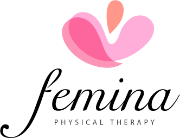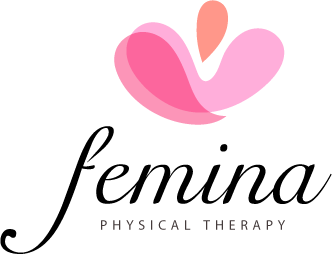Trigger Point Injections for Chronic Pelvic Pain and Myofascial Pain
A 2018 study by Bartley et al., showed that transvaginal trigger point injections helped reduce chronic pelvic pain, particularly when in conjunction with therapies including pelvic floor physical therapy.
What is Chronic Pelvic Pain and How Common is it?
Chronic pelvic pain affects 1 in 7 women in the United States and can have significant negative affects on quality of life, physical, emotional, and psychological well-being. While there are various causes for pelvic pain, a common definition of chronic pelvic pain is pain that is noncyclical and occurring for at least 6 months (Bartley et al, 2018).
Chronic pelvic pain can manifest in various ways, including pain with sex, painful bladder, pelvic girdle pain, and pelvic floor muscle spasms, to name a few. Common diagnoses associated with chronic pelvic pain include interstitial cystititis/bladder pain syndrome (IC/BPS), endometriosis, pain with penetration (dyspareunia), and pelvic floor dysfunctions including vaginismus and anismus. As we’ve stated in previous blog posts, chronic pelvic pain can involve different systems of the body and include various symptoms that are gynecologic, urologic, psychologic, gastroenterologic, and musculoskeletal.
Trigger Points and Chronic Pelvic Pain
What is a trigger point?
According to the Mayo Clinic, “trigger points are areas of tight muscle fibers can form in your muscles after injuries or overuse. A trigger point in a muscle can cause strain and pain throughout the muscle. When this pain persists and worsens, doctors call it myofascial pain syndrome.” Researchers have recently confirmed that endometriosis is tied to sensitization of pain receptors in the peripheral and central nervous system as well as myofascial dysfunction and pain (Stratton, Khachikyan, Sinaii, Ortiz, & Shah, 2015).
In 2003, Butrick et al. found that 85% of their surveyed patients with a diagnosis of interstitial cystitis/bladder pain syndrome (IC/BPS) had myofascial pain and pelvic floor overactivity (AKA hypertonicity), and trigger points in the pelvic floor.
Similarly, pelvic floor muscle trigger points are commonly found with patients with other pelvic pain including pain with penetration (dyspareunia), vulvodynia, and vaginismus (Bartley et al., 2018).
Myofascial pain is a common disorder that affects muscles in the body. People with myofascial pain may find hard nodules, or “trigger points” in the muscle that are painful with applied pressure. For people with endo, they may have trigger points in the abdominal and pelvic areas that transfer pain down into the lower pelvis - into the vaginal canal, pelvic floor, and rectum. The resulting pain causes the muscles of the pelvic floor to guard in protection, causing a negative spiral of even more muscle tension and pain.
Pelvic Floor Therapy for Trigger Points Associated with Myofascial Pain
Pelvic floor physical therapy (PFPT) is the mainstay of treatment for pelvic floor myofascial pain and has been shown to significantly improve symptoms in IC/BPS patients (Fitzgerald et al., 2012) and those with endometriosis
Pelvic floor physical therapy for trigger points and myofascial pain
Pelvic floor physical therapy can restore quality of life, sexual function, and empower those with chronic pelvic pain with the tools they need to help manage symptoms in the long run.
Pelvic floor therapy can help manage the pain in the following ways:
- Training in self treatment techniques including foam rolling, lymphatic massage, autonomic relaxation, and stress reduction techniques
- Manual therapy to treat connective tissue dysfunction and myofascial trigger points
- Visceral mobilization (gentle massage techniques that loosen internal adhesions and restore movement to the organs including the intestine, bladder, uterus, and ovaries)
- Postural training and therapeutic exercise to treat dysfunctional movement
- Pelvic floor therapy to treat painful sex, sensitive tissues, pain with bowel movements
- Exercises for pelvic muscles to reduce pain, improve bladder retention, improve bowel function, and increase the flow of blood to the area
- Therapeutic yoga to improve lymphatic drainage and reduce chronic pain
- Neuromuscular re-education and autogenic relaxation to reduce chronic muscle over-activity, reduce pain, and improve sleep
Trigger Point Injections as Adjunct Therapy for Chronic Pelvic Pain
Bartley et al. (2018) reviewed the cases of one hundred one women with a mean age of 44 years who had a total of 257 separate visits for pelvic floor muscle injections.
In the Bartley study, doctors used one of the following medicines for their injections: lidocaine 1%, lidocaine 2%, bupivacaine 0.5%, or ropivacaine 0.5% with or without 1 mL of triamcinolone. After the first trigger point injection visit, 77% of patients reported some decrease in their pain level. Improvement in pain was noted after the 1st through 4th injection visits. 10% of the patients reported adverse effects including lower extremity numbness, dizziness, nausea, bleeding, and headache (Bartley et al., 2018).
The Importance of a Multidisciplinary Healthcare Team for Chronic Pelvic Pain
Chronic pelvic pain is a complex condition that requires a multidisciplinary approach (Bartley, et al., 2018). A study mapping patterns of body pain in 193 patients showed that 73% of IC/BPS patients reported pain outside the primary IC/BPS site (i.e., vagina, lower abdomen, lower back, pelvis, and buttocks). This goes to show that chronic pelvic pain is a complex pain condition that goes beyond the bladder, a multidisciplinary team approach has the best chance of making a meaningful improvement in the patient’s symptoms (Gupta et al., 2015).
To learn more about our total body approach approach to chronic pelvic pain, contact us here.
References
Bartley, J., Han, E., Gupta, P., Gaines, N., Killinger, K. A., Boura, J. A., … Peters, K. M. (2018). Transvaginal Trigger Point Injections Improve Pain Scores in Women with Pelvic Floor Hypertonicity and Pelvic Pain Conditions. Female Pelvic Medicine & Reconstructive Surgery, 1. doi:10.1097/spv.0000000000000581
Butrick CW. Interstitial cystitis and chronic pelvic pain: new insights in neuropathology, diagnosis and treatment. Clin Obstet Gynecol 2003;46(4): 811–823.
Fitzgerald MP, Payne CK, Lukacz ES, et al. Randomized multicenter clinical trial of myofascial physical therapy in women with interstitial cystitis/painful bladder syndrome and pelvic floor tenderness. J Urol 2012;187(6): 2113–2118.
Moldwin RM, Fariello JY. Myofascial trigger points of the pelvic floor: associations with urological pain syndromes and treatment strategies including injection therapy. Curr Urol Rep 2013;14(5):409–417.
Gupta P, Gaines N, Sirls LT, et al. A multidisciplinary approach to the evaluation and management of interstitial cystitis/bladder pain syndrome: an ideal model of care. Transl Androl Urol 2015;4(6):611–619.
Mayo Clinic, (2019). Myofascial Pain syndrome.
Stratton, P., Khachikyan, I., Sinaii, N., Ortiz, R., & Shah, J. (2015). Association of Chronic Pelvic Pain and Endometriosis With Signs of Sensitization and Myofascial Pain. Obstetrics and Gynecology, 125(3), 719–728.









 Start Your Pelvic Health Journey
Start Your Pelvic Health Journey

